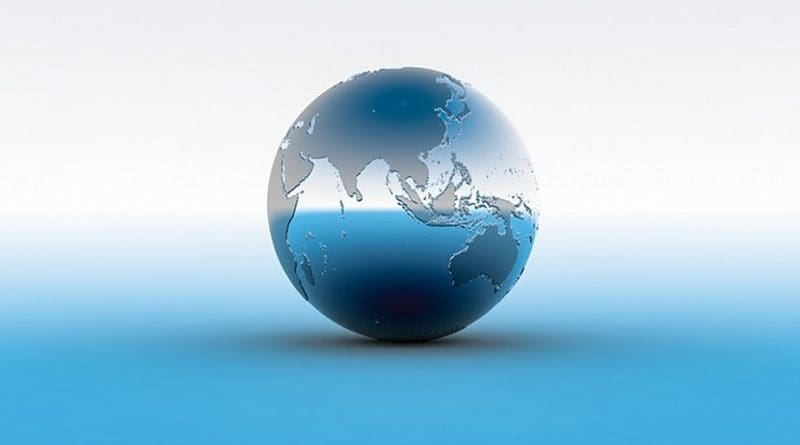ASEAN Under Weight Of Growing US-China Struggle In South China Sea – Analysis
As rivalry between the United States and China heats up eleven weeks ahead of US presidential elections, ASEAN aims to hold its ground, eschew taking sides, and stress its central role in shaping the region’s economic and security architecture. This was the subtext of a recent ASEAN Foreign Ministers statement released on Aug. 8 as the 10-member bloc celebrates its 53rd founding anniversary. Rising tensions between its two most important trade and security partners unsettle regional stability and disrupt supply chains. Most worryingly, increasing contact between their two navies in the South China Sea risk possible mishaps, which can plunge the region into conflict.
U.S. and China find themselves in opposite sides on a broad range of issues from trade, technology, Hong Kong’s autonomy, Taiwan, human rights, and pandemic blame game. But none can be as dangerous as the South China Sea. Unlike other irritants in their great power relations, the maritime flashpoint provides both sides the opportunity to physically display their challenge to one another. The increased frequency of U.S. freedom-of-navigation operations and exercises and growing Chinese presence and conduct of its own maritime drills stir tempest in the semi-enclosed sea. This dynamic raises the specter of untoward incidents. Caught in the middle, ASEAN will try to keep a safe distance from both rivals while calling for restraint and hoping for cooler heads to prevail. How the next US administration will conduct its China policy and carry out its position in the South China Sea will be factored by regional states.
In an Aug. 8 statement, chief diplomats from the region reiterate ASEAN’s commitment in keeping Southeast Asia a region of “peace, security, neutrality and stability” and press for “strengthening peace-oriented values in the region in line with international law.” Once again, it called for “self-restraint in the conduct of activities that would complicate or escalate disputes and affect peace and stability,” a clear reference not only to claimants, but also to maritime powers active in the sea. ASEAN foreign ministers also called for the “continued building of strategic trust and mutual confidence among countries through continued dialogue, win-win cooperation and practical confidence-building measures.” The phone call between U.S. Defense Secretary Mark Esper and his Chinese counterpart, Defense Minister Wei Fenghe, early this month was likely greeted by ASEAN as a positive step in continued attempts to avoid miscalculation as the two sides lock horns over the strategic waterway. A visit by Esper to Beijing this year may also help in this regard.
As great power competition may tear up ASEAN and roll back decades of painstaking community-building efforts, the Association will dig in, buttress its centrality, and renew calls for multilateralism. It would continue to engage both rivals but will stay away from initiatives seen as antagonistic towards one or the other. In the South China Sea, this may mean distancing from exercises with other powers unless the entire bloc is behind it. ASEAN took part in maritime exercises with China in 2018 and with the U.S. in 2019 in the contested sea. But individually, they may refrain from doing so especially under the prevailing climate. Either you have 10 onboard or none at all. This attitude would inform even longstanding US allies, Philippines and Thailand, and emerging security partner, Vietnam.
From this vantage point, President Rodrigo Duterte’s decision to disallow the Philippine military from engaging in exercises with any power in the disputed sea is not an outlier. While Duterte did approve his country’s robust participation to the US-led RIMPAC multilateral exercises off Hawaii next week, his position against joining naval drills with other countries in the South China Sea theater is likely to stay. In his fifth State of the Nation Address in late July, he also expressed his views against the re-establishment of U.S. bases in the country saying: “I have nothing against America, I have nothing against China but if you put bases here, you will double the spectacle of a most destructive thing just like Manila during the Second World War—during the retaking of this city. One of the most devastated cities in the world.” While it may be an exaggeration, it shows how far the fiery leader is taking US-China rivalry—which some consider as transitioning from a cold to a possibly hot war—seriously. Although he may not be alone in that assessment, other regional leaders may be less expressive.
ASEAN countries understand that they have little control over the affairs of powers greater than them. But because the region is fast emerging as an arena for US-China contest, ASEAN has to step up and find ways to defuse tensions. Singapore and Hanoi played host to two US-North Korea summits, and the Shangri-La Dialogue in Singapore continue to be the premier inclusive venue for the discussion of regional security issues. ASEAN leader Indonesia long championed non-alignment and several regional countries joined it in forming a third bloc during the Cold War.
ASEAN can, thus, draw on past experiences and recent gains to navigate its way in the age of great power games. Notwithstanding the constraints to high-level face-to-face diplomacy, it can host a summit that will bring in China and the U.S. and other maritime powers to outline acceptable behavior at sea and promote sustained dialogue between contending rivals. It can enhance transparency of Code of Conduct negotiations and open it later for accession of other countries. Whether these efforts can change the motives and intent of great powers is another thing. But failing to try, ASEAN surrenders its lot to the vicissitudes of great power struggle.
This article was also published at Analyzing War

